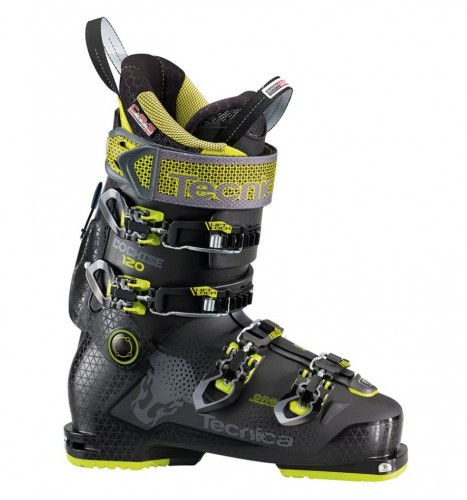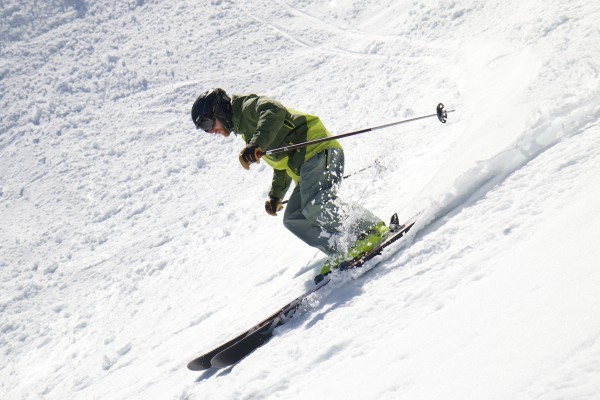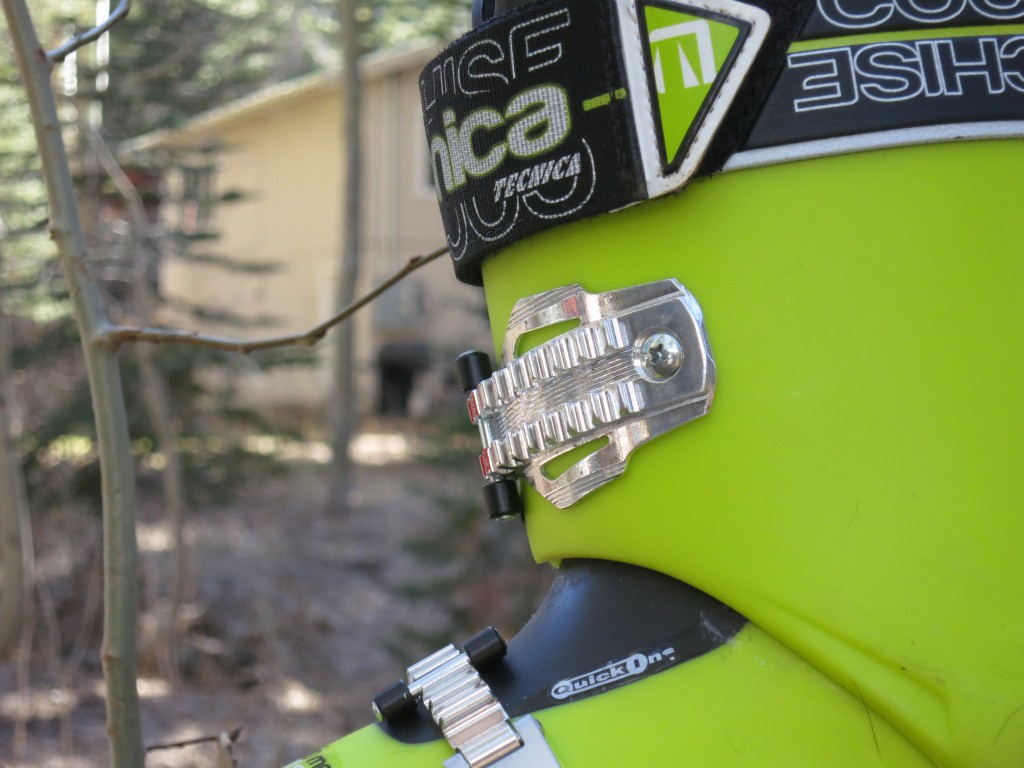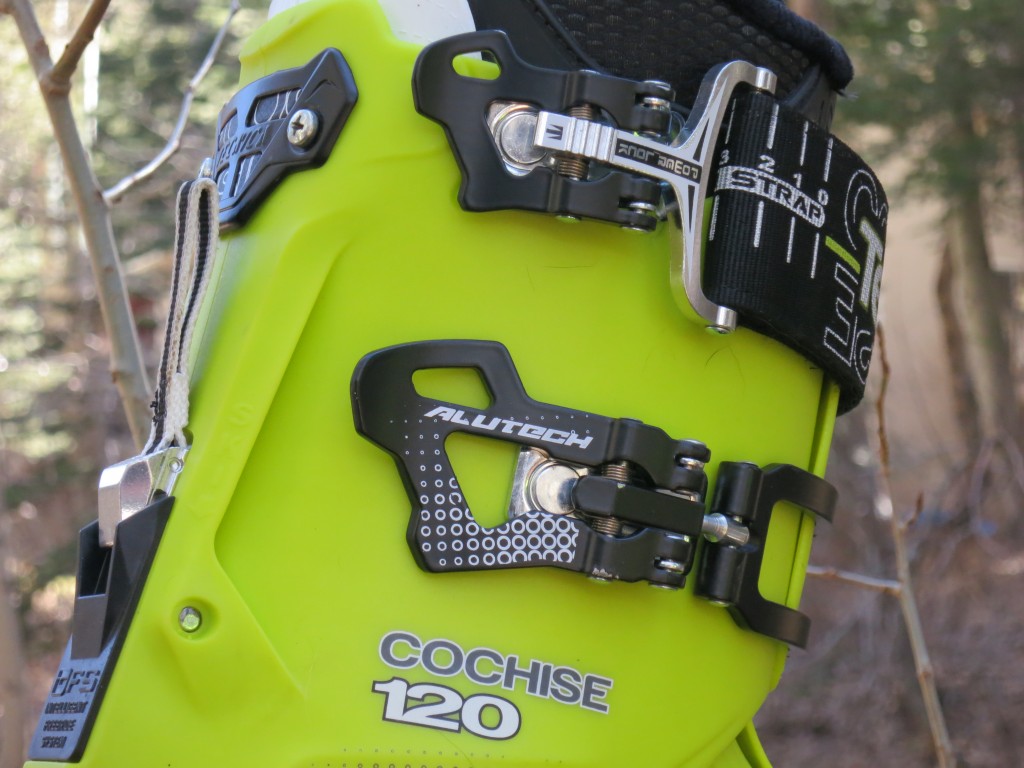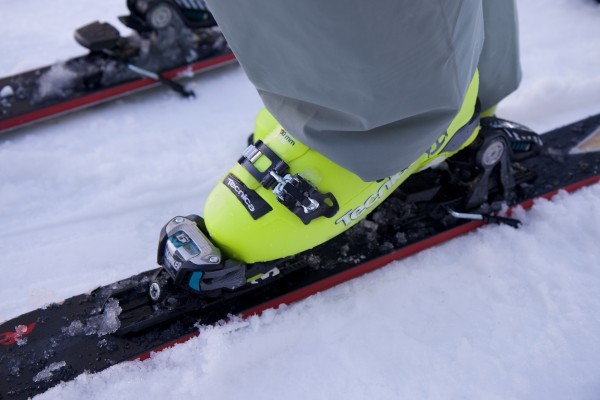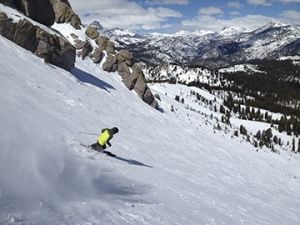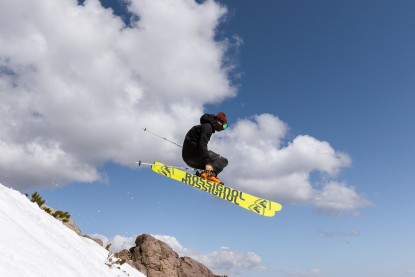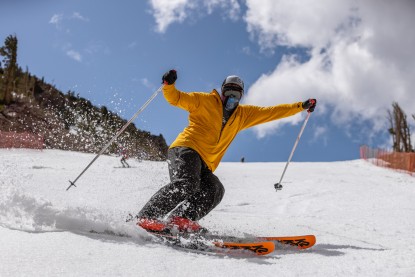The Tecnica Cochise 120 is a surprisingly versatile all-mountain ski boot; it is comfortable for hiking and skinning, and also skis well in the resort in all types of terrain. The Cochise's lightweight materials sacrifice some of the stiffness and performance of a dedicated in-bounds ski boot but make the boot a good choice for those who prefer the feel of a backcountry style boot and occasionally want to duck outside the ropes and access more hike-to terrain. The features of the boot are smart, durable, and effective. We appreciate the boot's versatility and awarded it the Top Pick for this reason. The design of the Cochise 120 is outside the box while maintaining quality and performance with respect to the balance that it seeks to strike between backcountry and resort skiing.
We tested the updated version of this boot for the 2015 season and continue to be impressed with this boot overall. It is one of our favorite boots to spend long days in because it is warm and the walk mode provides relief from an aggressive ski stance. It is lightweight, which is really nice for walking around, doing odd work, and going up and down stairs.Tecnica Cochise 120 Review
Our Verdict
Our Analysis and Test Results
Hands-On Review
The Tecnica Cochise 120 falls into what we are describing as the adventure/freeride category of all-mountain ski boots. It is versatile in its intended application, which is mostly resort skiing with occasional side-country and backcountry forays, and has functional features that set it apart in this category of boots.
Performance Comparison
Comfort and Fit
The Tecnica Cochise 120 has a slightly relaxed fit that is comfortable when walking in the boot. This year's model has an improved fit in the ankle which results in a more snug fit and better skiing than in the previous version. Last year's boot felt a bit looser in the ankle which resulted in a less than secure feeling while skiing. Unlike the K2 Pinnacle 130 which has a tight ankle pocket that is irritating over the course of the day, the Cochise has a soft ankle/heel pocket that is secure but comfortable. The boot's liner comes equipped with a rear spoiler that is attached using velcro. We found the stance adjustment to be subtle with or without this piece, but the ease of changing it can not be beat. Not only are the buckles micro-adjustable on the Cochise, but there are many positions on the buckle's ladder, making for easy and precise tightness. When considering the different fit characteristics needed to accommodate both hiking and skiing, we think this is a valuable asset to this boot.
The Cochise is easy to put on and take off. The Quick Instep design featured on this boot, uses a softer plastic on the lower shell near the instep allowing for a smoother and softer sliding entry.
Downhill Performance
The Cochise is faced with some trade-offs to meet its design goals of switching between in-bounds and backcountry skiing. One of which is the downhill performance of the boot. The lightweight materials and 3 buckle design allow the boot to hike comfortably but come with the cost of not skiing as well as a dedicated in-bounds, all-mountain ski boot. But, speaking from experience, it does ski much better overall than an alpine touring/backcountry ski boot, which makes it a great balance for those who only occasionally ski out-of-bounds.
Tecnica nailed it with their metal, locking design on the walk-mode; it feels secure and does not sacrifice any of the stability of the boot in ski-mode. We did not feel any play from the separation of cuff and lower shell like in the K2 Pinnacle 130 where the walk mode wiggled a little bit in rough terrain.
The feel from hard packed, variable snow was dampened in the boot thanks to the heel shock absorber incorporated into the boot board. The liner is also enhanced on the bottom to absorb some vibration.
Features
One of the design features that puts the Cochise into the adventure/freeride category is the addition of a walk-mode to the boot. The walk-mode on the Cochise functions well, providing decent range of motion when the cuff is disengaged from the shell and the power-strap and upper buckle are loosened. The walk-mode has better range of motion than the Dalbello Panterra ID 120, the K2 Pinnacle 130, and the Rossignol All Track 120, and we prefer the metal locking mechanism that the Cochise uses versus the plastic block design found on the Panterra. It is more secure and we believe it will be more durable over time if used often.
The Cochise 120 is technically a 3 buckle boot with a unique power strap that utilizes a velcro closure and a buckle that cams it to maximum tightness. The buckle allows for quick release of the power-strap, allowing more mobility in the cuff while in walk mode. This is a useful feature for the walk-mode, but we found it difficult to dial in the tightness for downhill focused skiing. One concern is whether or not re-using this velcro over time will result in a failure of this top buckle, which is crucial for the downhill performance of the boot. One solution is using a design like the K2 Pinnacle 130 which allows the buckle to release from the shell. This way we found you can set the appropriate amount of tension for going downhill, release it for walking/ascending, and not have to adjust it quite as much over time.
The Cochise has a removable sole system. We like the nut/bolt design of the system and find the hex head bolts less prone to stripping than a phillips head screw, and easier to use after the bolt heads see some wear. A bonus feature of the Cochise soles is that you can purchase after-market alpine touring soles that have tech-binding compatibility. These soles are an awesome option for backcountry skiers because of their more aggressive tread for hiking and the ability to use lightweight tech bindings, such as Dynafit brand bindings.
Warmth
The Tecnica Cochise 120 was reported to be a warm boot by our testers. The liner did appropriately wick moisture away from the foot when it was used in high output activities such as hiking. The roomy toe box and thicker liner material help to contribute to the warmth of the boot. The slightly wider toe box allows for enough wiggling to keep the digits warm on cold, sedentary chair rides and while waiting in lift lines. Similar to the Lange RX 120, the Cochise 120 liner comes prepared to accept an aftermarket boot heater.
Durability
We found no issues with durability during our test of the Tecnica Cochise 120. The replaceable sole system is excellent with the nut/bolt design and the option for Alpine Touring soles. Due to its metal components and locking design, the walk mode is more durable than a block style plastic mechanism, like the one found on the Dalbello Panterra ID 120.
As discussed above, the use of velcro as a top buckle system may be a long term concern for the performance of the boot, but only more time with the boot will tell.
Best Application
The Tecnica Cochise 120 is a great choice for the skier who wants to ski in all conditions and all terrain at the resort and occasionally dip outside the boundary for short backcountry ski adventures. It is too heavy to be considered a dedicated backcountry ski boot (unless you have legs of steel), but is burly enough to stand up to abuse at the resort. It is a great boot for accessing your favorite hike-to terrain at big mountain ski resorts.
Value
The Tecnica Cochise is an excellent value for the dedicated skier who wants one boot that will take them all over the mountain, including just on the other side of the resort boundary.


